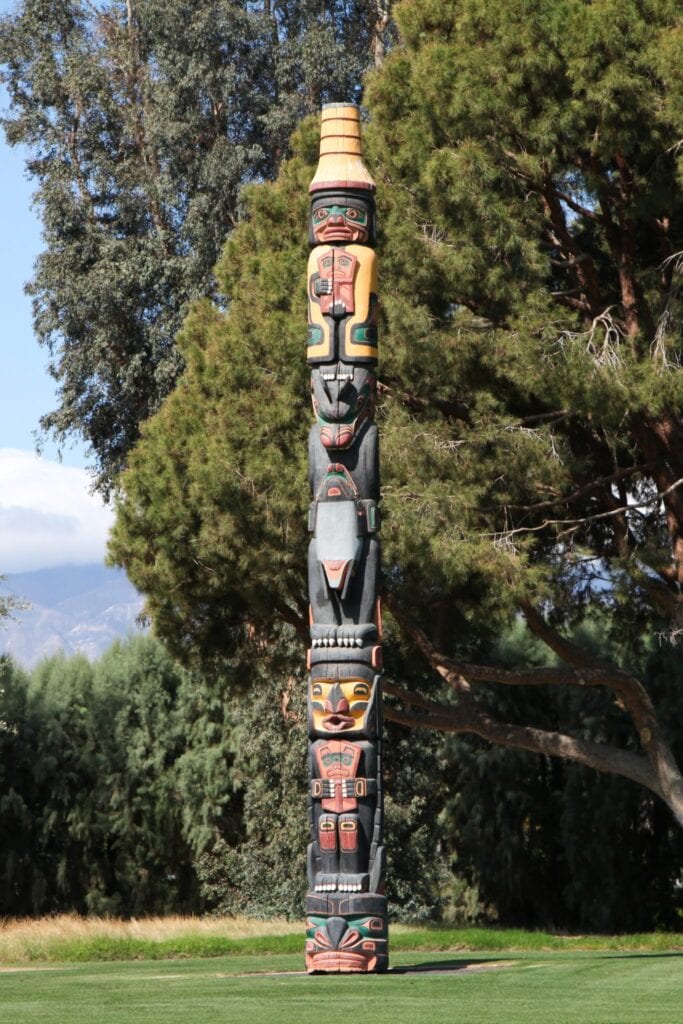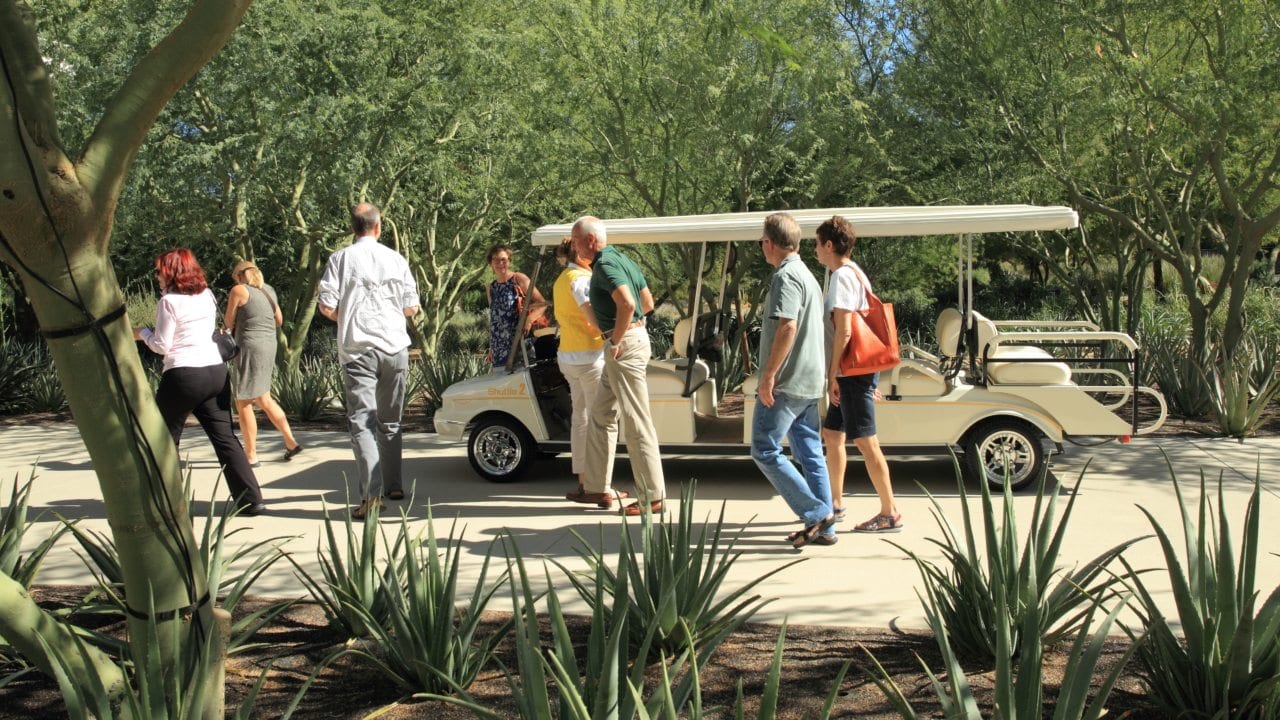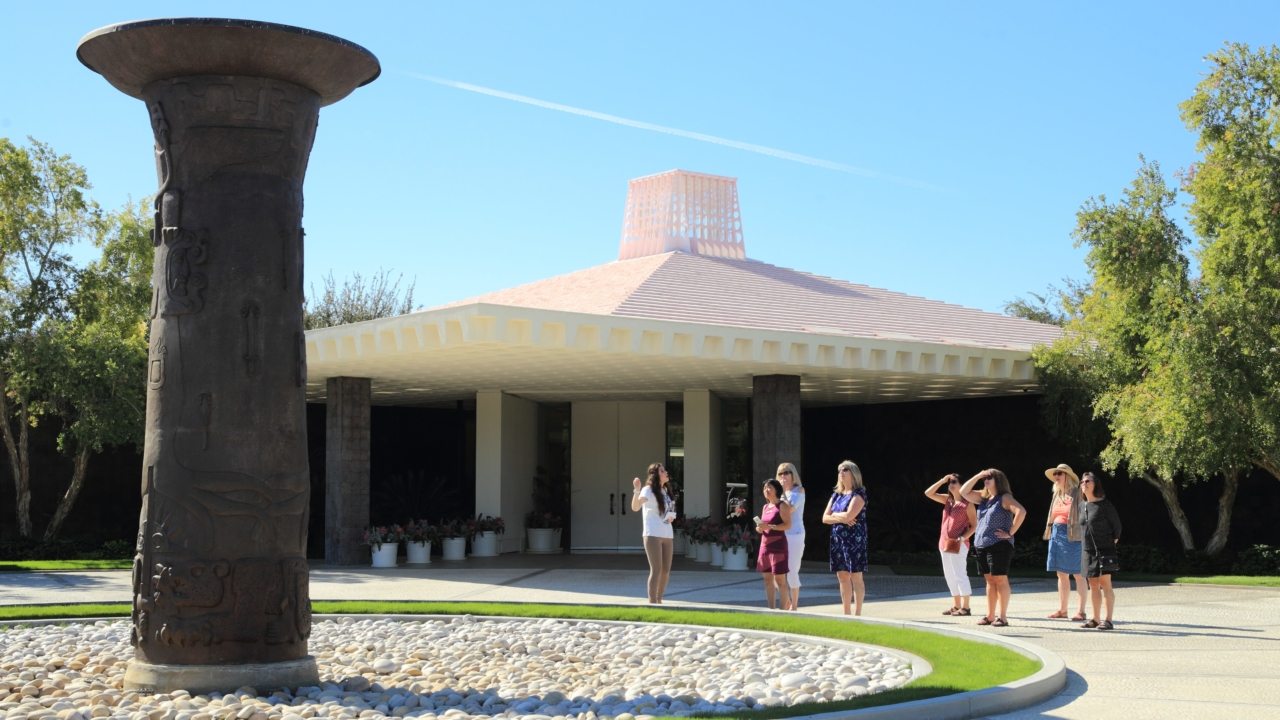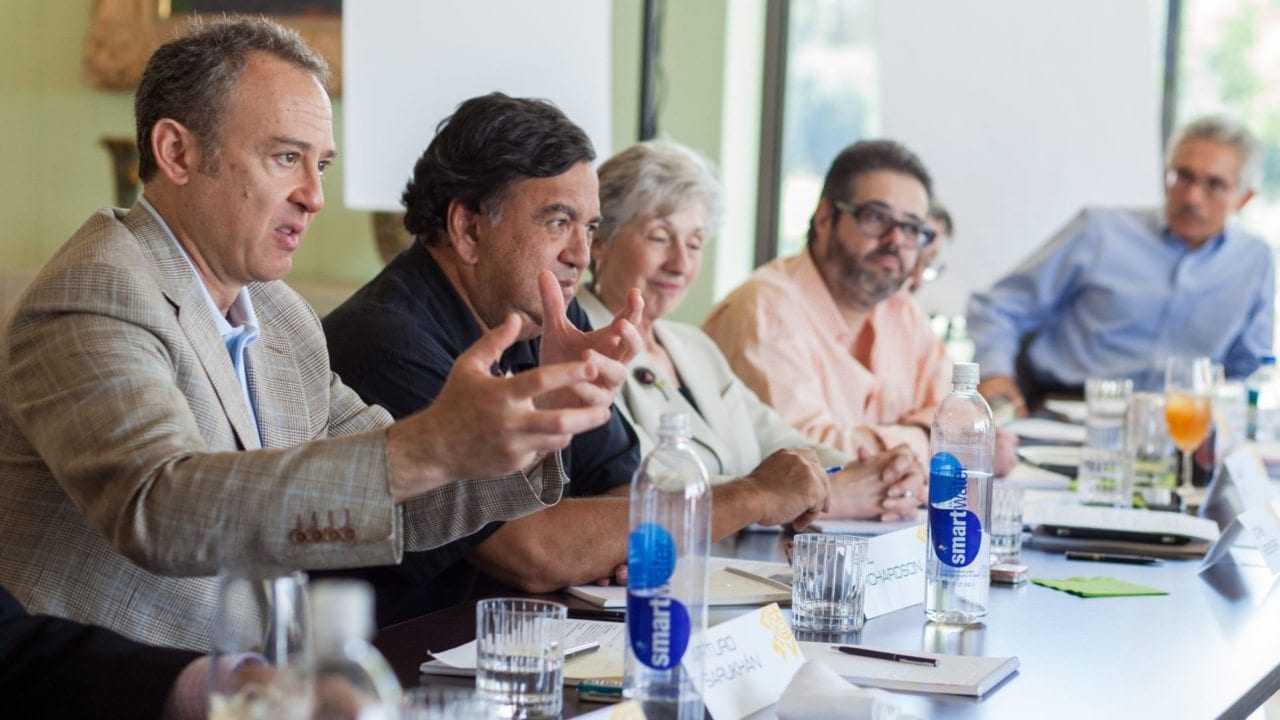Traditional Reraising Ceremony on April 15 to Celebrate Kwakiutl Totem Pole

Photos by Lani
Rancho Mirage CA: April 2012 – A Kwakiutl totem pole located at The Annenberg Retreat at Sunnylands will be dedicated at a traditional reraising ceremony at 10am, Sunday, April 15. The first 100 visitors interested in attending will be shuttled to the estate and will walk a short distance to the site of the pole.
The totem was commissioned from world-renowned First Nations carver Henry Hunt and installed in 1976 on the Dick Wilson designed private golf course, where it is a focal point of the 5th fairway. Hunt discussed the idea and design of the totem pole with Walter and Leonore Annenberg and respectfully included the Kwakiutl symbol for money in the carving.
On-site restoration of the totem pole was completed in the summer of 2010 by Stanley Clifford Hunt, Henry’s youngest son, using traditional Kwakiutl methods. Stanley worked with his wife, Lavina, and son, Jason Hunt during the restoration process. They will participate in the rededication ceremony and other activities taking place at Sunnylands Center & Gardens, including carving and painting demonstrations, storytelling, and family art activities. Festivities begin with the 10:00am dedication. Demonstrations will take place from 11:30am – 3:30pm. Storytelling is scheduled for 11:30am, 1:00pm, and 2:30pm. Craft creation will run from 11:00am – 3:30pm.
Background on the totem pole and the artist:
Henry Hunt (1923- 1985) was a member of the Hunt family of Kwakiutl artists, arguably the preeminent family of Kwakiutl art in modern times. Henry was a master carver who worked at the Royal British Columbia Provincial Museum in Victoria for many years succeeding the renowned Kwakiutl artist and Henry’s father-in-law, Mungo Martin. Henry assisted Mungo in the carving of Queen Elizabeth’s 100-foot pole that is installed in Windsor Great Park, U.K. and was recently restored by one of Henry’s older sons. Several of Henry’s sons apprenticed with their father and are today celebrated artists in their own right. Henry’s youngest son, Stanley, was commissioned to restore the Sunnylands totem pole, or as Stanley refers to it, “dad’s totem.”
When in 1976 Stanley asked his father if he could be a carver, Henry replied, “the first thing you have to do is make your own tools.” With self-made tools, Stanley spent the next three years as his father’s apprentice and ultimately assisted his father in the carving of six totem poles.
Stanley brought to the Sunnylands project two additional Kwakiutl artists: his wife, Lavina, and their son, Jason, thereby carrying on the Hunt family tradition of father-son mentoring in the traditional Kwakiutl arts. Working in traditional methods, the restoration involved the repair of small breaks, the addition of protection for the top hat and other appendages, the application of two coats of protective oil, and at least two coats of fresh paint. All of the decorative and symbolic elements as well as the facial and other features on the pole’s mythical figures, including a seal, bear, Chief, and a double-headed serpent, were repainted restoring lost lines and colors, thereby reinstituting Henry’s original aesthetic and interpretive intent.
Stanley Hunt and his family reside in Fort Rupert near Port Hardy on Vancouver Island. His masks, totem poles, and graphic original paintings are collected for their craftsmanship and authenticity. His work can be found in museums and private collections worldwide. He has been featured in a number of Canadian publications and on national television.
A link to a video made for the occasion by Cathedral City High School students an be found here.



